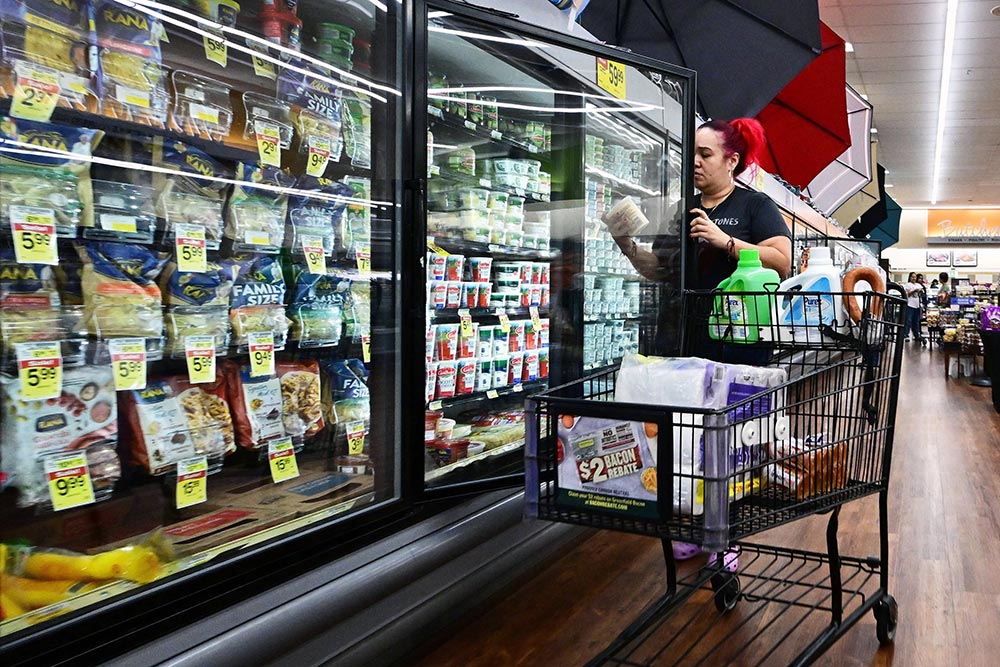
目前,价格上涨的生活必需品不止是汽油和食品杂货。为了支付增长的医疗成本,美国民众选择了推迟或者彻底放弃治疗。据西区健康(West Health)和盖洛普(Gallup)的最新调查显示,过去六个月,有约9,800万(38%)的美国人为了支付医疗费用,削减了食品、汽油、公用事业等方面的支出。
此次调查的时间是在2022年6月,当时美国的通胀率达到40年最高的9.1%。该项盖洛普小组调查中包括来自50个州和哥伦比亚特区的3,001位成年人。
盖洛普高级研究员丹·维特斯表示:“首先发生的一般通胀,会减少消费行为,之后的医疗通胀虽然严重程度只有一般通胀的一半,但依旧远高于近几年的平均水平,这是一把双刃剑。当然,医疗本身就成本高昂。我们过去四年一直在衡量和跟踪美国成年人的医疗成本负担,当前的状况在这方面写下了新的篇章。”
低收入家庭做出牺牲的比例最高,有超过一半年收入不足48,000美元的家庭减少了支出,但有近20%的高收入家庭(年收入超过180,000美元)也不得不减少支出。调查还发现,50岁以下的女性有36%削减了医疗和医药支出,而同龄男性的比例只有27%。
西部健康总裁提摩西·A·拉什表示:“我们发现,高医疗成本对女性的影响尤其严重。我们还根据其他证据发现,女性享受医疗保健的费率更高,而且很可惜,我们在收入方面依旧存在性别不平等,因此医疗成本对女性的影响更高并不意外。”
2022年6月,医疗通胀涨至4.5%,并且分为两类:“医疗商品”和“医疗服务”。高物价正在迫使四分之一(26%)的美国人避免医疗和处方药物。
维特斯解释称:“2010年,[巴拉克]奥巴马总统签署通过《平价医疗法案》(Affordable Health Care Act)之后,医疗通胀与2000年代初相比有所下降,但现在却不断升高。我们身边的一切都在升高通胀,而且医疗通胀是一个滞后指标,因为许多医疗价格是由年度合同确定的。我们可以合理假设医疗通胀会持续上涨,尤其是在2023年或重新谈判合同的新财年。我认为现在还没到最糟糕的时候。”
虽然有降低医疗成本的立法,但受访者对于改革能否如期进行没有太大的信心。在被问到他们所选出的国会议员在近期内是否会采取措施降低医疗成本时,约60%的受访者表示“毫无信心”,有35%的受访者表示“没有太大信心”。
拉什表示:“我们会看到,医疗问题将成为中期选举的核心议题,包括医疗权利、医疗实践和医疗成本等各个方面的问题。”
在这方面,他建议民选官员承担更多责任,个人要利用网站和应用对处方药进行比价,并与医疗提供商讨论成本更低的替代治疗选择。
拉什表示:“我们经常说新冠疫情或猴痘疫情是公共卫生紧急事件。而考虑到高医疗成本的普遍影响,它本身已经变成了一种公共健康紧急事件。”(财富中文网)
翻译:刘进龙
审校:汪皓
目前,价格上涨的生活必需品不止是汽油和食品杂货。为了支付增长的医疗成本,美国民众选择了推迟或者彻底放弃治疗。据西区健康(West Health)和盖洛普(Gallup)的最新调查显示,过去六个月,有约9,800万(38%)的美国人为了支付医疗费用,削减了食品、汽油、公用事业等方面的支出。
此次调查的时间是在2022年6月,当时美国的通胀率达到40年最高的9.1%。该项盖洛普小组调查中包括来自50个州和哥伦比亚特区的3,001位成年人。
盖洛普高级研究员丹·维特斯表示:“首先发生的一般通胀,会减少消费行为,之后的医疗通胀虽然严重程度只有一般通胀的一半,但依旧远高于近几年的平均水平,这是一把双刃剑。当然,医疗本身就成本高昂。我们过去四年一直在衡量和跟踪美国成年人的医疗成本负担,当前的状况在这方面写下了新的篇章。”
低收入家庭做出牺牲的比例最高,有超过一半年收入不足48,000美元的家庭减少了支出,但有近20%的高收入家庭(年收入超过180,000美元)也不得不减少支出。调查还发现,50岁以下的女性有36%削减了医疗和医药支出,而同龄男性的比例只有27%。
西部健康总裁提摩西·A·拉什表示:“我们发现,高医疗成本对女性的影响尤其严重。我们还根据其他证据发现,女性享受医疗保健的费率更高,而且很可惜,我们在收入方面依旧存在性别不平等,因此医疗成本对女性的影响更高并不意外。”
2022年6月,医疗通胀涨至4.5%,并且分为两类:“医疗商品”和“医疗服务”。高物价正在迫使四分之一(26%)的美国人避免医疗和处方药物。
维特斯解释称:“2010年,[巴拉克]奥巴马总统签署通过《平价医疗法案》(Affordable Health Care Act)之后,医疗通胀与2000年代初相比有所下降,但现在却不断升高。我们身边的一切都在升高通胀,而且医疗通胀是一个滞后指标,因为许多医疗价格是由年度合同确定的。我们可以合理假设医疗通胀会持续上涨,尤其是在2023年或重新谈判合同的新财年。我认为现在还没到最糟糕的时候。”
虽然有降低医疗成本的立法,但受访者对于改革能否如期进行没有太大的信心。在被问到他们所选出的国会议员在近期内是否会采取措施降低医疗成本时,约60%的受访者表示“毫无信心”,有35%的受访者表示“没有太大信心”。
拉什表示:“我们会看到,医疗问题将成为中期选举的核心议题,包括医疗权利、医疗实践和医疗成本等各个方面的问题。”
在这方面,他建议民选官员承担更多责任,个人要利用网站和应用对处方药进行比价,并与医疗提供商讨论成本更低的替代治疗选择。
拉什表示:“我们经常说新冠疫情或猴痘疫情是公共卫生紧急事件。而考虑到高医疗成本的普遍影响,它本身已经变成了一种公共健康紧急事件。”(财富中文网)
翻译:刘进龙
审校:汪皓
Gas and groceries aren’t the only necessities costing more these days. In an effort to accommodate higher health care costs, Americans have been delaying or skipping treatments altogether. According to a new survey from West Health and Gallup, 38% of Americans, or roughly 98 million people, cut back on food, gas, utilities, and other costs to pay for health care expenses in the past six months.
The poll, which was conducted in June 2022 when inflation reached a 40-year high of 9.1%, included 3,001 adults from all 50 states and the District of Columbia as part of the Gallup panel.
“It’s a double-edged sword when you’ve got general inflation, which is curtailing consumer behavior, and then you’ve got health care inflation, which is only half as great, but it’s still a lot higher than it’s been on average in recent years,” says Dan Witters, senior researcher at Gallup. “And of course, health care is expensive to begin with. We’ve been measuring and tracking the burden of the cost of care on American adults now for four years, and this is one more chapter in that story.”
While tradeoffs were higher in lower-income households with more than half of those earning less than $48,000 annually making cuts, nearly 20% of higher-earning households (those making more than $180,000 a year) were forced to cut back on spending as well. The survey also found that 36% of women under 50 cut back on medical care and medicine compared to 27% of men under 50.
“We found that females were disproportionately impacted by the high cost of health care,” says Timothy A. Lash, president of West Health. “We also know from other evidence that females utilize health care at a higher rate and unfortunately we still have gender inequality in terms of income, so it’s not surprising that there’s a higher impact of health care costs there.”
Health care inflation climbed to 4.5% in June 2022 and is split into two categories: “medical care commodities” and “medical care services.” Higher prices are driving one in four Americans, or 26%, to avoid both medical care and prescriptions altogether.
“Health care inflation simmered down after President [Barack] Obama signed the Affordable Health Care Act into law back in 2010 compared to the early 2000s, but it’s higher now,” explains Witters. “It’s getting hoisted up by everything we’re seeing around us, and it’s always going to be a bit of a trailing indicator because a lot of these prices are built into annualized contracts. It’s reasonable to postulate that health care inflation is going to continue to increase, particularly in 2023 or into the new fiscal years when contracts get renegotiated. I think the worst is yet to come.”
While there is legislation on the table to reduce health care costs, there’s little faith among the respondents that any change will actually happen with nearly 60% of the adults polled being “not at all confident” and 35% saying there were “not too confident” that their own elected representatives to Congress would take action to lower health care costs in the near future.
“We’re going to see in the midterms that health care is very much on the ballot along with the entire continuum of health care rights, health care practice, and health care costs,” says Lash.
To that end, he recommends holding elected officials more accountable, taking personal responsibility to use websites and apps that allow you to comparison shop when it comes to prescriptions and discussing lower-cost alternatives for treatments with health care providers.
“We talk a lot about pandemics in terms of COVID or monkeypox as public health emergencies,” says Lash. “With this sort of ubiquitous impact, it’s the high cost of health care that has become a public health emergency in and of itself.”






